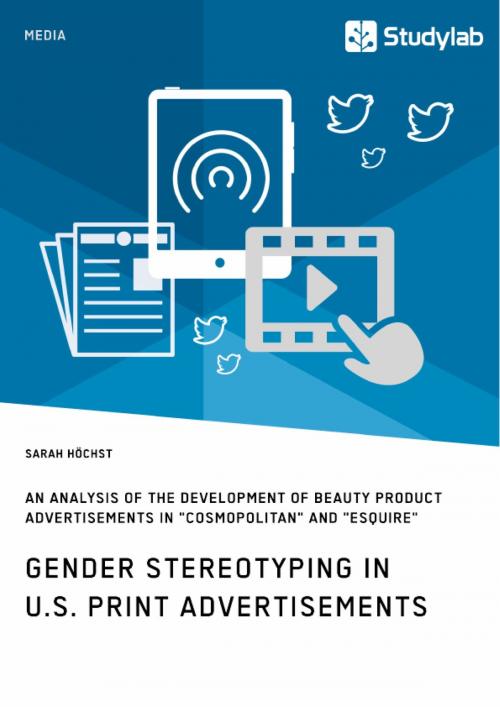Gender Stereotyping in U.S. Print Advertisements
An Analysis of the Development of Beauty Product Advertisements in 'Cosmopolitan' and 'Esquire'
Nonfiction, Entertainment, Drama, Anthologies| Author: | Sarah Höchst | ISBN: | 9783668497276 |
| Publisher: | Studylab | Publication: | August 3, 2017 |
| Imprint: | Studylab | Language: | English |
| Author: | Sarah Höchst |
| ISBN: | 9783668497276 |
| Publisher: | Studylab |
| Publication: | August 3, 2017 |
| Imprint: | Studylab |
| Language: | English |
In contemporary society advertising is everywhere. Advertisement is always with us, no matter where we are. Although we are aware of the constant bombarding by advertisement everywhere we go, we hardly recognize the influence that it has on us. Thereby, advertising has a great influence on us as individuals and on society as a whole. Through the media, we make sense of our cultural identities, gender and sexuality. The central goal of this book is to examine the development of presentations of gender stereotypes in print advertisements over a time period of 40 years via content analysis of a sample of magazine advertisements. The key questions are: How do U.S. print advertisements construct gender stereotypes? How did these stereotypes develop and do they have an influence on the consumer and the U.S. culture? Content analysis has been proven in decades of research on gender stereotyping as it relates to mass media and because this is an appropriate method to not only focus on images, but also on verbal messages. Magazines present an especially enduring, popular medium, thus this study focuses on gender stereotypes in print advertisements of magazines. More specifically, it focuses on the magazines Cosmopolitan and Esquire due to the varying target audiences, and because they might be a potential indicator of U.S. magazine advertising in general. To further limit the object of investigation, this study concentrates on beauty product advertisements. From the text: - Gender studies; - Cosmopolitan; - Esquire; - Identity; - U.S. Magazines
In contemporary society advertising is everywhere. Advertisement is always with us, no matter where we are. Although we are aware of the constant bombarding by advertisement everywhere we go, we hardly recognize the influence that it has on us. Thereby, advertising has a great influence on us as individuals and on society as a whole. Through the media, we make sense of our cultural identities, gender and sexuality. The central goal of this book is to examine the development of presentations of gender stereotypes in print advertisements over a time period of 40 years via content analysis of a sample of magazine advertisements. The key questions are: How do U.S. print advertisements construct gender stereotypes? How did these stereotypes develop and do they have an influence on the consumer and the U.S. culture? Content analysis has been proven in decades of research on gender stereotyping as it relates to mass media and because this is an appropriate method to not only focus on images, but also on verbal messages. Magazines present an especially enduring, popular medium, thus this study focuses on gender stereotypes in print advertisements of magazines. More specifically, it focuses on the magazines Cosmopolitan and Esquire due to the varying target audiences, and because they might be a potential indicator of U.S. magazine advertising in general. To further limit the object of investigation, this study concentrates on beauty product advertisements. From the text: - Gender studies; - Cosmopolitan; - Esquire; - Identity; - U.S. Magazines















